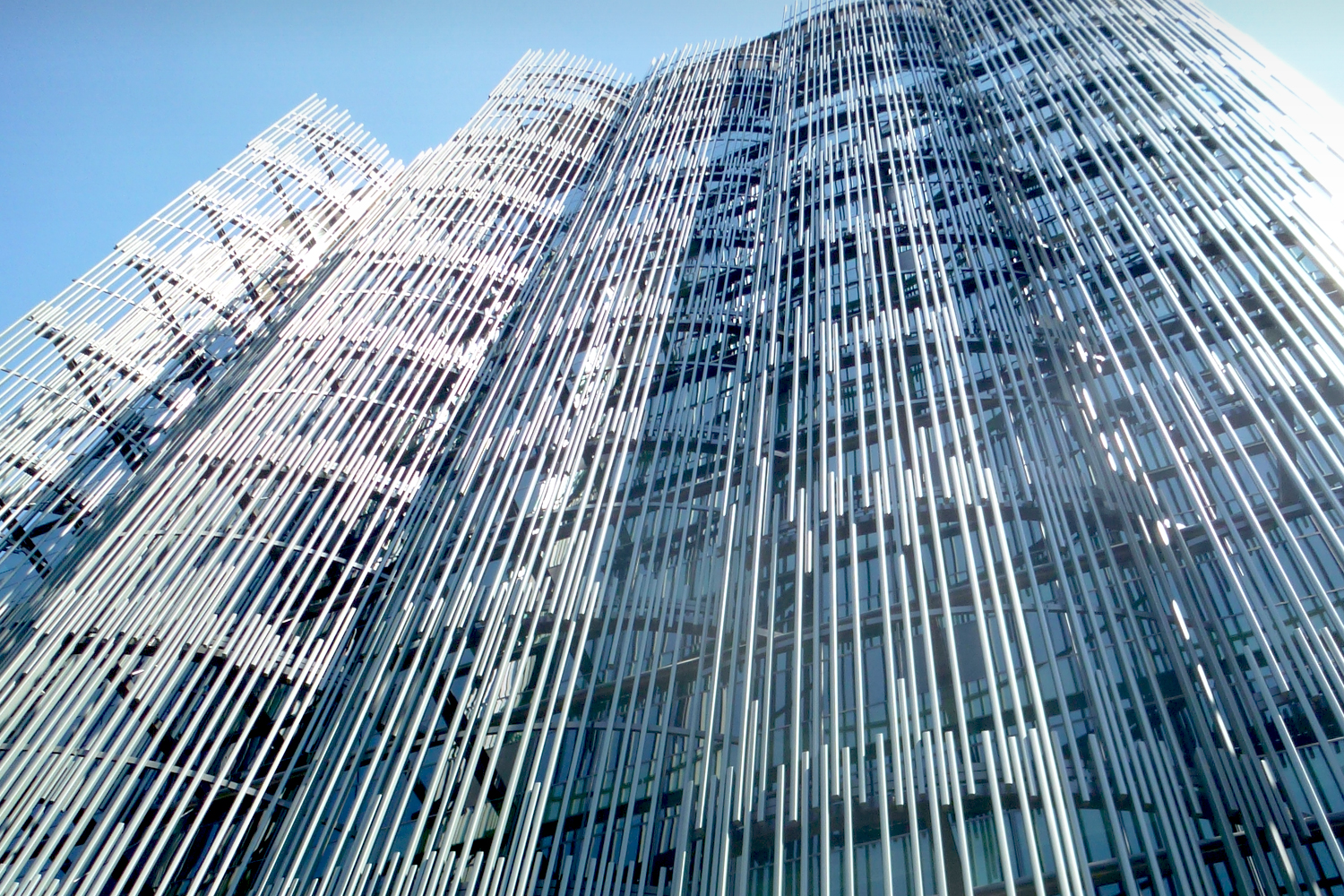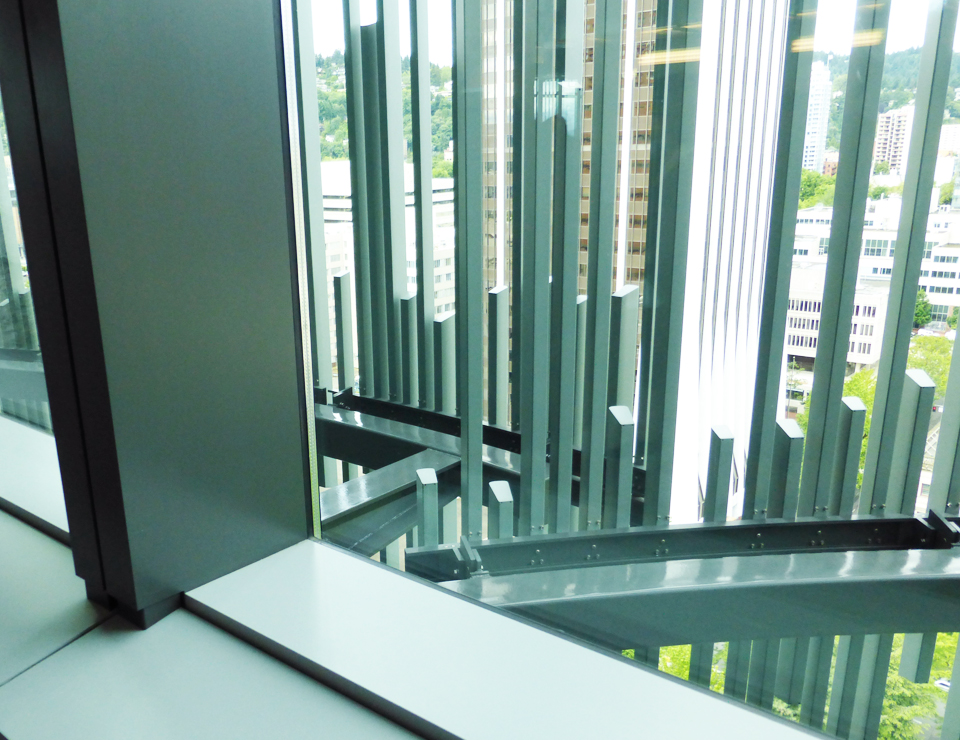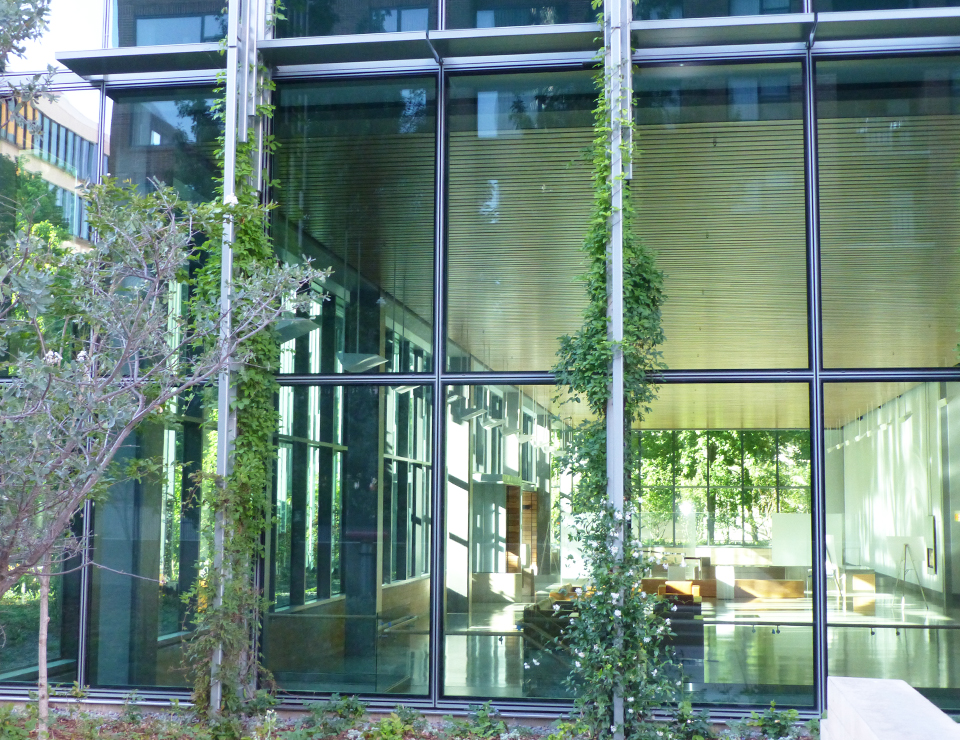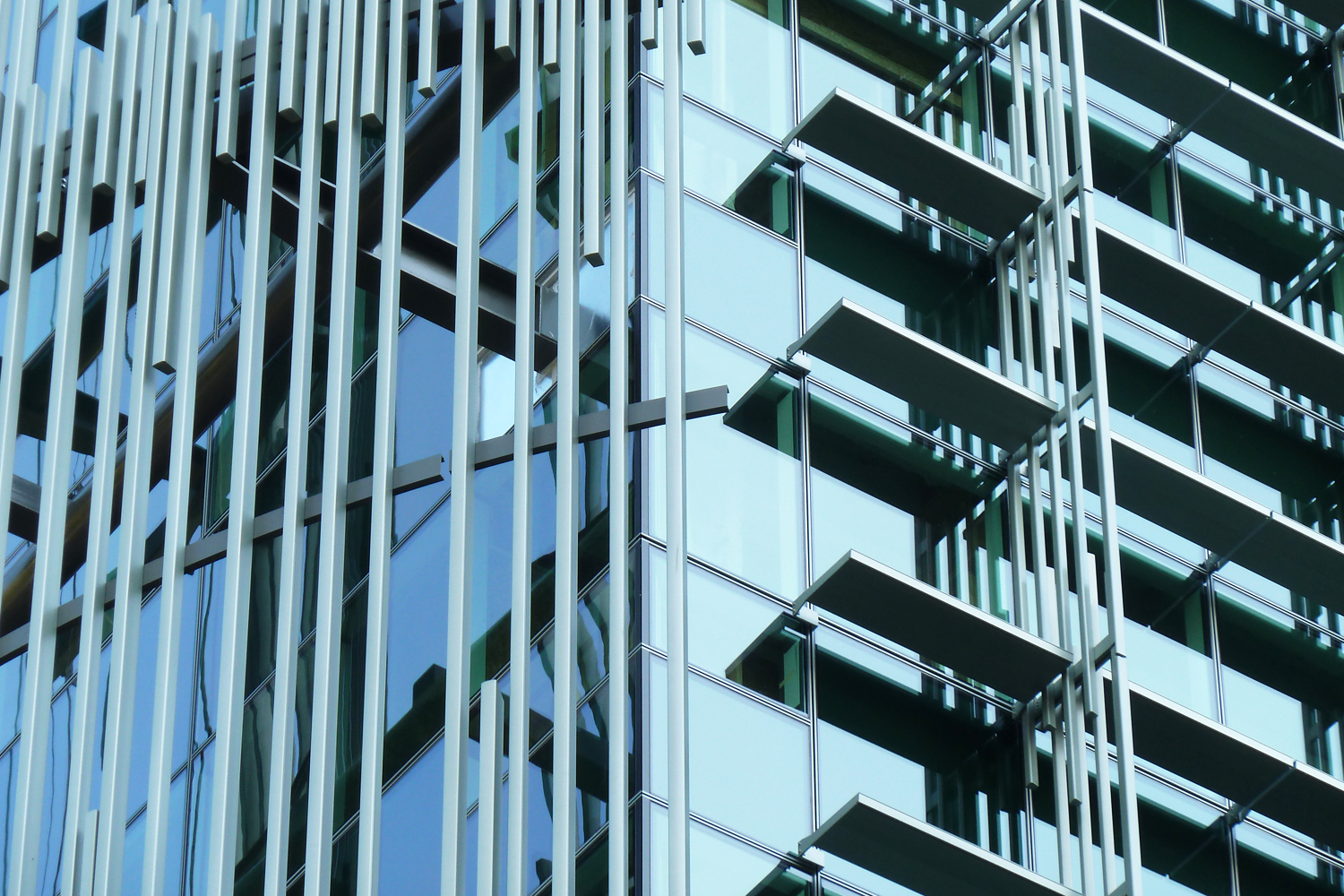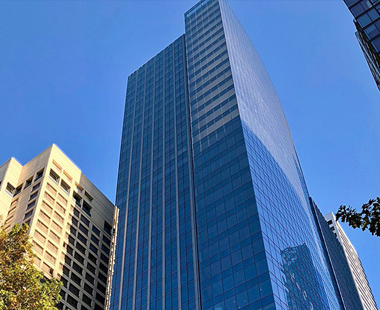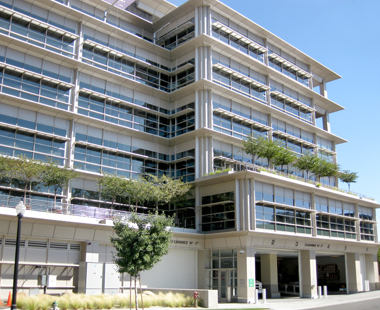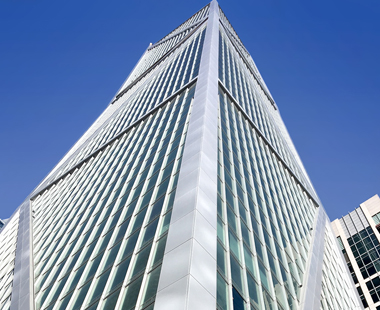BIM technology, project management and coordination with design teams key to successful design of LEED Platinum rated building.
Edith Green-Wendell Wyatt Federal Building
Portland, Oregon
The facade provided by Benson for the Edith Green-Wendell Wyatt Federal Building modernization project sets a new benchmark for innovation and performance. The features of the exterior envelope play a prominent role in helping to transform the 1974-vintage office building into a LEED Platinum pillar of sustainable design.
Consideration of holistic design elements was given to maximize the project goals, such as daylighting and shading. Solutions resulting from this approach included reed-like shading devices stretching up the entire 18-story height of the west facade and an integrated shade/light reflector on the south and east faces that are optimized for the building’s off-axis orientation. In addition to passive energy conservation elements, an unprecedented 9 inches of thermal insulation was furnished. Five inches are nested within the spandrel areas and an additional four inches were added to the interior. This cutting-edge curtainwall design helps to reduce the building’s overall energy use to 55-60% less than a typical office building.
The continuous shading scheme was achieved by designing a variety of extruded hollow aluminum reed sizes and lengths up to 30 feet long. Each reed is supported by horizontal light shelves spaced every two floors and cantilevers several feet above and below the supports, creating a rhythmic pattern. The exterior shading system helps to optimize the building’s VAV (variable air volume) mechanical system and minimizes provisions for interior cooling devices.
A demanding project schedule combined with the collaborative nature of the endeavor necessitated the use of BIM software. Benson worked in conjunction with the entire design team to assure accurate and accommodating input to the central model. The model proved to be invaluable to the success of this unique project. Various structural and aesthetic changes were seamlessly integrated into all affected components. In an effort to increase floor area and allow for blast load capacity of the original structure, the general contractor, Howard S. Wright, suggested extending the slab edge with ancillary pre-cast concrete additions. The necessary anchorage was confirmed to fit through analysis of the BIM model.


